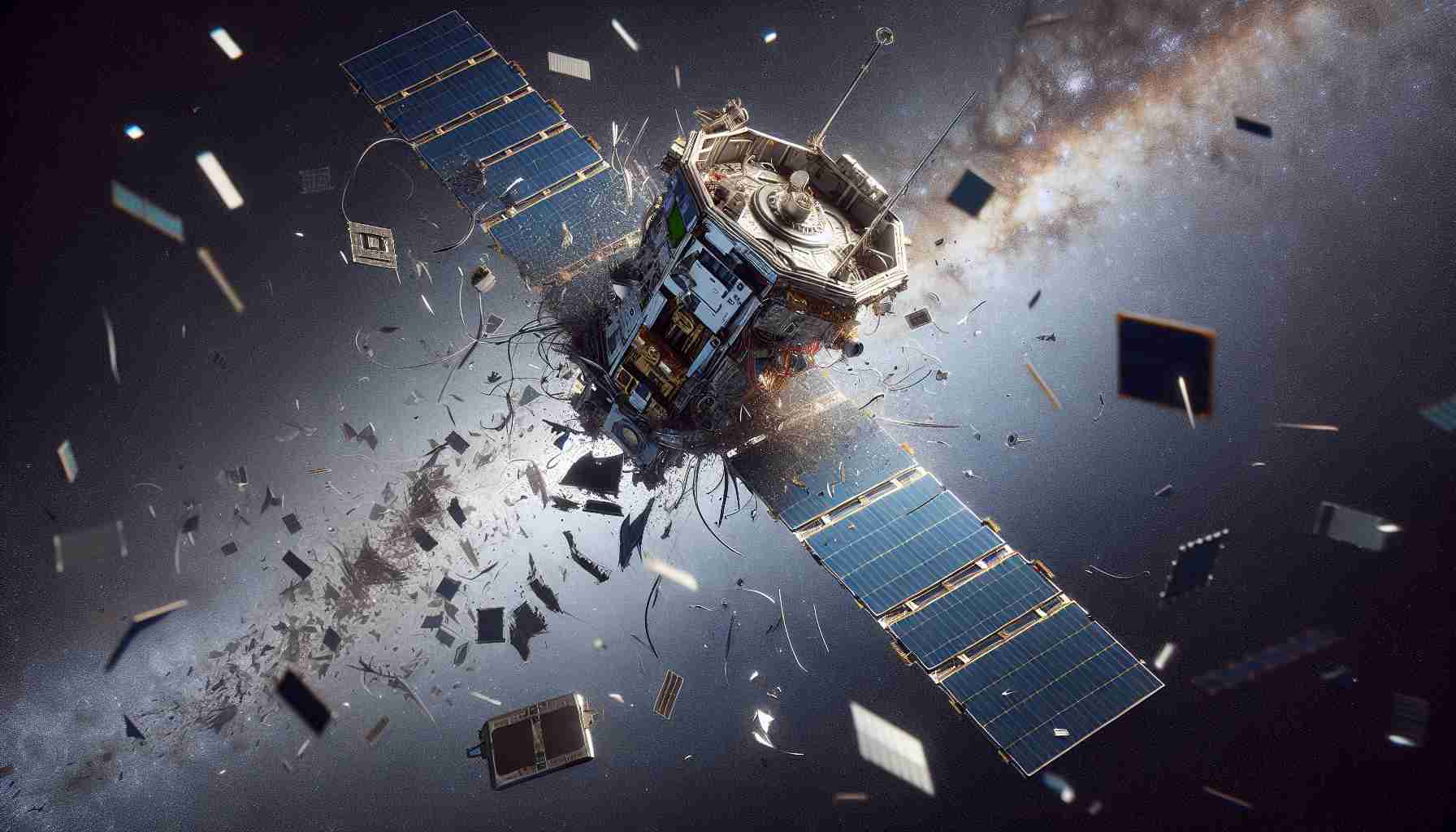
In a startling incident in space, Boeing’s communications satellite, IS-33e, has met with a catastrophic malfunction, resulting in its disintegration while orbiting the Earth. This unfortunate event led to a complete loss of the satellite, which was integral in providing services across Africa, Europe, and parts of the Asia-Pacific region.
The satellite, owned by Intelsat, experienced a significant anomaly a few days prior to its destruction. Following this anomaly, the satellite ultimately became inoperable on October 21. Intelsat confirmed the total failure of the IS-33e, emphasizing their collaborative efforts with Boeing and government entities to investigate the incident thoroughly.
Pieces of the satellite have subsequently scattered into space, creating a hazardous field to be monitored by the U.S. Space Forces. An alert from the agency indicated that at least 20 fragments of debris are currently being tracked; however, no immediate threats to other space assets have been reported.
Launched in August 2016, the IS-33e was originally anticipated to function for 15 years but encountered significant operational challenges shortly after its deployment. Notably, this satellite followed another incident involving a Boeing satellite in 2019 that faced similar uncertainties regarding its destruction. Given these ongoing complications, Boeing has faced increasing scrutiny over its space mission management and satellite reliability.
Satellite Mishap: Boeing’s IS-33e Crashes and Breaks Apart in Orbit
In a recent and significant setback for the aerospace industry, the Boeing IS-33e communications satellite shattered in orbit, raising critical questions about satellite reliability and space debris management. This event is not only a blow to Boeing and Intelsat but also has far-reaching implications for the wider space community.
What went wrong with the IS-33e?
The IS-33e satellite was reportedly grappling with several operational challenges before its catastrophic failure. Initial investigations suggest that an unexpected power anomaly may have triggered the satellite’s demise. This incident highlights a worrying trend for Boeing, as the company has faced multiple operational issues with its satellites over the years. A clearer understanding of the specific technical failures and their root causes is crucial for the future of satellite manufacturing and deployment.
Key Challenges and Controversies
One of the most pressing challenges surrounding the IS-33e incident is the growing concern over space debris. As more satellites enter orbit, the risk of collisions and the proliferation of debris increases, posing threats not only to operational satellites but also to crewed missions and space exploration activities. The U.S. Space Force’s monitoring efforts are essential, yet the vastness of space makes it difficult to track all debris effectively.
Moreover, there are ongoing debates about accountability and liability in the event of satellite failures leading to debris generation. Questions arise: Who is responsible for managing and mitigating debris? Should companies face stricter regulations regarding satellite reliability and end-of-life protocols to minimize space junk?
Advantages and Disadvantages
The deployment of satellites like IS-33e has numerous advantages. Communications satellites enhance global connectivity, support emergency response, and facilitate advancements in various sectors, including telecommunications and broadcasting. They enable high-speed internet access, particularly in underserved regions, and are critical for international data transmission.
However, there are disadvantages to consider. The failures of satellites can lead to significant financial losses for companies like Intelsat and Boeing, not to mention the disruption of services for consumers and businesses relying on these technologies. Additionally, the potential for increased space debris poses long-term risks for future satellite launches and the safety of astronauts.
Future Implications
Looking ahead, the IS-33e incident could prompt a reevaluation of how satellite operations are conducted. Companies may adopt more stringent testing and quality control measures to ensure reliability, while regulators might impose tighter guidelines to enhance safety protocols for managing space debris.
The aftermath of the IS-33e crash will likely resonate through future satellite missions, potentially altering how aerospace companies approach design, launch, and operational strategies.
For more information on satellite technologies and industry standards, visit Boeing and Intelsat.



